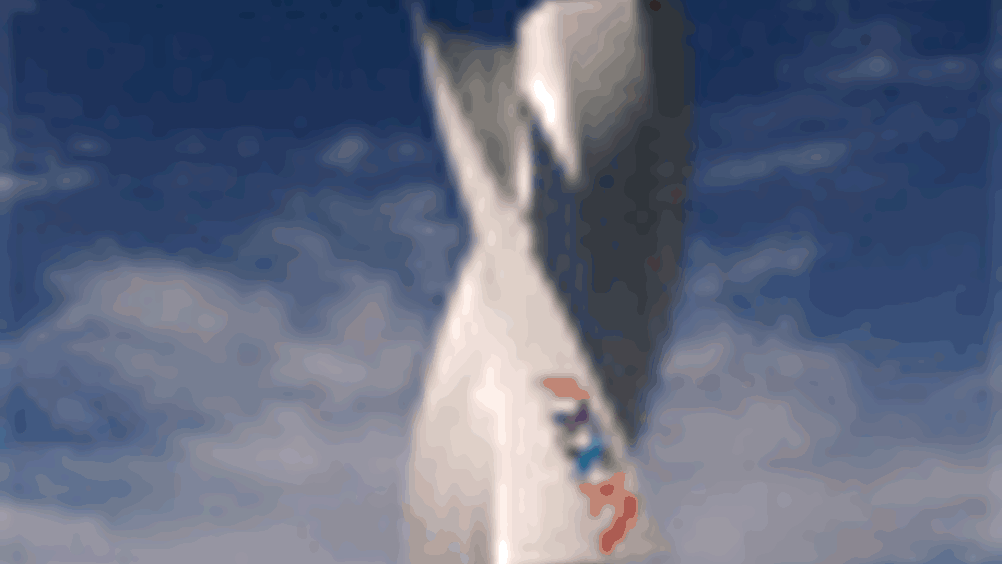Perth hosts 7kW VAWT prototype
Windworks Engineering has taken the wraps off a new Vertical Axis Wind Turbine and disclosed that it had erected a 7kW prototype at its testing facility north-east of Perth, Australia.

Windworks Engineering has taken the wraps off a new Vertical Axis Wind Turbine (VAWT) and disclosed that it had erected a 7kW prototype at its testing facility north-east of Perth, Australia.
The 7kW design, with a wing height of 5.5m, will now be tested to evaluate its aerodynamic performance as well as stability, sound and vibration levels under various wind regimes. This will be followed by the trialling of a selection of permanent magnet generators.
The Windworks turbine, which has its main rotor-shaft arranged vertically, as opposed to horizontally, does not, like its Horizontal Axis Wind Turbine (HAWT) cousins, need to be pointed into the wind to be effective. It also rotates at low speeds and hence emits little noise, an advantage on urban sites where wind direction is highly variable.
Despite their benefits in low-wind situations, VAWT turbines are not as efficient as their more common horizontal counterparts, a fact acknowledged by the engineers at Windworks Engineering. It admitted that while the efficiency of HAWTs in wind-tunnel testing may be as high as 45 per cent, a typical VAWT design may only achieve between 25-35 per cent efficiency.
However, it also claimed that efficiency of HAWTs in operation is significantly reduced due to inefficiencies resulting from the turbine not fully facing the wind at all times, as well as lengthy maintenance shutdowns. This, the German company said, causes the effective efficiency of the HAWTs to drop to about 25 per cent over their lifetime.
Windworks also added that its design will be considerably less expensive than a horizontal design to commission. That is because, while horizontal turbines require deep foundations, the vertical turbine can be built on much shallower foundations and can be erected without the need for cranes.
The Windworks VAWT, with a vertical-support column and three vertical, aerodynamic wings, sports a generator that sits low to ground level, minimising maintenance costs, as well as reducing the complexity of the foundations.
The new turbine is also said to eliminate problems that have arisen at many HAWT windfarms, where birds and bats have been known to fly into the spinning blades. Engineers at Windworks claim that because their design appears as a solid mass to wildlife, the design does not have the see-through effect common in HAWT designs and so birds and bats fly around it.
The turbine is silent too because there is no compression of air between the wings and the support column as with the HAWT. The Windworks VAWT is also smaller than a comparable HAWT and creates less shadow and visual impact.
Windworks does not plan to build or own a manufacturing facility to build the VAWT turbines. Contractors manufactured the prototype turbine in Australia and future manufacturing will be sourced and tendered from Asian companies under the supervision of Windworks. Agreement in principle has been reached with Siemens to build and supply the electric system for the turbines.
Windworks plans to develop turbines for domestic, commercial and industrial use ranging from 2.5kW to several MWs in capacity.
David Wilson
Register now to continue reading
Thanks for visiting The Engineer. You’ve now reached your monthly limit of news stories. Register for free to unlock unlimited access to all of our news coverage, as well as premium content including opinion, in-depth features and special reports.
Benefits of registering
-
In-depth insights and coverage of key emerging trends
-
Unrestricted access to special reports throughout the year
-
Daily technology news delivered straight to your inbox










Water Sector Talent Exodus Could Cripple The Sector
Well let´s do a little experiment. My last (10.4.25) half-yearly water/waste water bill from Severn Trent was £98.29. How much does not-for-profit Dŵr...